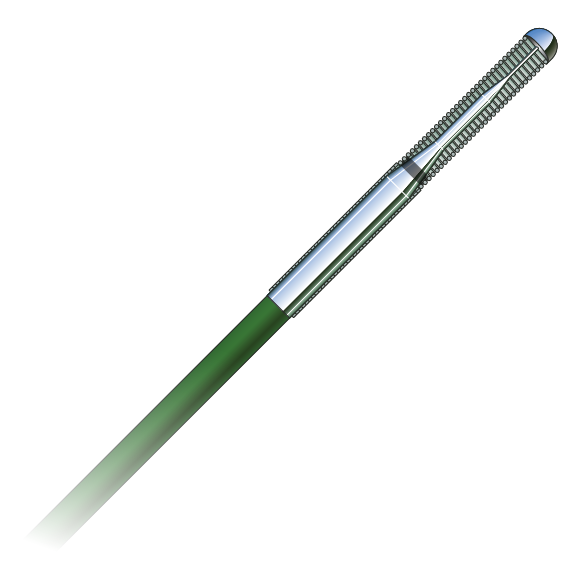Hi-Torque Supra Core™ peripheral extra supportive guide wires are designed to place and exchange devices with support and confidence during procedures.

Facilitate and Exchange
Support Capability
- Supportive .035 wire features a soft atraumatic tip
- Core-to-tip design enables 1:1 torque response and exceptional steering1
- Hydrophobic coating provides a balance of lubricity and tactile feel1
Efficiency
- Enables smooth .035 wire exchanges during procedure
- Facilitates catheter placement for diagnostic and contralateral approach interventions
- Is available in guide wire lengths of 145 cm, 190 cm and 300 cm
Ordering Information
| Product | Part Number | Diameter | Length | Tip Style | Units Per Package |
|---|---|---|---|---|---|
| Hi-Torque Supra Core™ | 1002703 | 0.035 in | 145 cm | Core-To-Tip | 5 |
| Hi-Torque Supra Core™ | 1002703-01 | 0.035 in | 190 cm | Core-To-Tip | 5 |
| Hi-Torque Supra Core™ | 1002703-02 | 0.035 in | 300 cm | Core-To-Tip | 5 |
Data on file at Abbott.
References
- Tóth GG, Yamane M, Heyndrickx GR. Heart. 2015;101:645–652.
MAT-2006316 v2.0
Hi-Torque™ Steerable Guide Wires
Hi-Torque Supra Core™ 35 Guide Wire

Intended Use
Hi-Torque Supra Core™ 35 Guide Wires are intended to facilitate the placement and exchange of interventional devices during diagnostic or therapeutic interventional procedures.
Indications
Refer to the device label for any additional product specific indications which may apply.
Contraindications
The Hi-Torque Supra Core™ 35 Guide Wire is not intended for use in the cerebral vasculature. Refer to the device label for any additional product specific contraindications which may apply.
Warnings
This device is designed and intended for ONE TIME USE ONLY. DO NOT RESTERILIZE AND / OR REUSE. Observe all guide wire movement in the vessels. Before a guide wire is moved or torqued, the tip movement should be examined under fluoroscopy. Do not torque a guide wire without observing corresponding movement of the tip; otherwise, vessel trauma may occur.
Torquing a guide wire against resistance may cause guide wire damage and / or guide wire tip separation. Always advance or withdraw the guide wire slowly. Never push, auger, withdraw or torque a guide wire which meets resistance. Resistance may be felt and / or observed under fluoroscopy by noting any buckling of the guide wire tip. Determine the cause of resistance under fluoroscopy and take any necessary remedial action.
If the wire tip becomes entrapped within the vasculature, DO NOT TORQUE THE GUIDE WIRE.
Maintain continuous flush while removing and reinserting the guide wire to prevent air from entering the catheter system. Perform all exchanges slowly to prevent air entry and / or trauma. Wipe the wire before all exchanges.
When reintroducing the guide wire, confirm that the interventional device tip is free within the vessel lumen and not against the vessel wall. Failure to do so may result in vessel trauma upon guide wire exit of the device. Use the radiopaque marker of the interventional device to confirm position.
Precautions
Guide wires are delicate instruments and should be handled carefully. Prior to use and when possible during the procedure, inspect the guide wire carefully for bends, kinks, or other damage. Do not use damaged wires. Using a damaged wire may result in vessel damage and / or inaccurate torque response.
Confirm the compatibility of the guide wire diameter with the interventional device before actual use.
Free movement of the guide wire within the interventional device is an important feature of a steerable guide wire system because it gives the user valuable tactile information. Test the system for any resistance prior to use. Adjust or replace the hemostatic valve with an adjustable valve if it is found to inhibit guide wire movement.
Adverse Events
Potential Adverse Events associated with use of this device may include the following but not limited to perforation, dissection, occlusion, myocardial infarction, embolism, and infection.
MAT-2306103 v1.0

Stay Connected